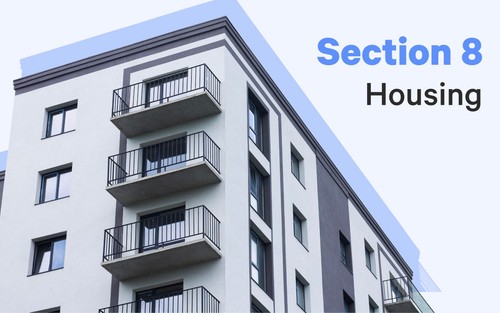Most homeowners need a mortgage to buy a home. Even real estate investors leverage loans and financings to find deals. But there are limits to how much lenders will give you if you qualify. How do mortgage lenders decide whom to lend to and how much? There’s a quick and easy way to measure: the loan-to-value ratio.
If you’re planning to buy a home or invest in real estate, the loan-to-value (LTV) ratio is a concept you’ll need to know. This article will give you an overview of the loan-to-value ratio, explain how it is calculated, and provide examples to understand its application in real estate better.
What is the loan-to-value ratio?
The loan-to-value ratio can significantly impact borrowing costs for both buyers and lenders.
The LTV ratio measures how much a loan covers an asset’s appraised value. It is expressed as a percentage and calculated by dividing the loan amount by the home’s value.
For example, if you purchase a home valued at $200,000 and take out a loan for $150,000, your loan-to-value ratio would be 75%.
LTVs are used in underwriting new home purchases, refinancing current mortgages, or approving home equity lines of credit (HELOC).
The home’s market value is determined by a home appraisal, which is ordered as part of the underwriting process. It may not be the agreed-upon purchase price.
What is considered a good LTV ratio?
While loan-to-value ratio qualifying standards vary by lender, a loan with an LTV ratio of 80% or lower is usually considered the most ideal. Lenders consider smaller loan amounts on higher appraisals to be less risky. Home values are less likely to depreciate by 20%, so if the homeowner does default on the loan, the lender’s chances of recouping their loss through foreclosure are greater. Plus, when the homeowner has a greater stake in the home, they are likelier to be financially stable and make their mortgage payments on time.
Why does the LTV ratio matter?
Lenders use this ratio to determine how much risk they take when lending money to a potential borrower to purchase an asset–in this case, a home. If the loan amount is higher relative to the value of the property, there is more risk involved for the lender. That’s because if they do foreclose on the property, they want to recoup their equity in the home’s sale. If the loan is overextended, they won’t get the money back from their investment.
Let’s say the borrower’s LTV ratio is higher, such as 85%. To balance their risk, the mortgage lender can charge higher interest rates or additional fees on the financing. The loan agreement may require the borrower to carry private mortgage insurance (PMI) to offset the lender’s risk.
Private mortgage insurance (PMI) compensates lenders if a high-risk loan defaults and forecloses. Paying PMI can increase the borrower’s monthly payments by 0.5-1% on the total loan amount each year. PMI requirements are typically waived once the LTV ratio is at least 80%. Depending on how much the borrower puts down and the home’s appreciation, it takes several years before there is enough equity to look at refinancing and dropping PMI.
For borrowers with a high LTV ratio, mortgages simply become more expensive between higher interest rates and paying PMI. If you feel the LTV is too high, the best thing to do is keep saving to increase the down payment. Remember, too, that you’ll need additional funds for the closing costs. Some loan programs can wrap closing costs into the loan, but that will increase your loan amount resulting in a higher LTV.
On the flip side, if the loan amount is lower relative to the asset’s value, there is less risk for the lender. This can result in a loan with better terms and more attractive loan rates for the borrower.
If the loan-to-value ratio is 80% or lower, most lenders offer mortgage and home equity applicants the lowest possible interest rate. Note that this is not a guarantee. Mortgage lenders will also assess the borrower’s credit score and debt-to-income ratio.
Are there loan programs for high LTV ratios?
Conventional loan programs are available for borrowers with higher loan-to-value ratios who want to build equity by owning real estate.
The Federal Housing Administration offers FHA loans with lower minimum down payment requirements. In exchange, the borrower must pay a mortgage insurance premium (MIP) that lasts as long as the borrower carries that loan, even if the LTV becomes 80%. These loan programs are intended to help first-time home buyers.
For example, the Home Ready loan from Fannie Mae and the Home Possible from Freddie Mac allow borrowers with loan-to-value ratios as high as 97%. This loan helps reduce the need for mortgage insurance and expand access to credit for low- to moderate-income borrowers.
The Department of Veteran Affairs (VA) and the U.S. Department of Agriculture (USDA) also provide specialized loan programs you may qualify for. VA and USDA loans can have LTV ratios as high as 100% and waive private mortgage insurance requirements. These loans do charge additional fees.
What if I have multiple loans on a property?
The LTV ratio measures the effect of a single mortgage loan when buying a property. In contrast, the combined loan-to-value (CLTV) ratio looks at all secured loans against a property’s value. This includes primary and second mortgages, home equity loans or lines of credit, and other liens.
For example, let’s say your home is worth $200,000. The remaining primary loan balance on the property is $100,000, and you’re applying for a home equity loan for $50,000. Your CLTV will be 75%.
Lenders used the CLTV to figure out how risky it would be to give a loan to a prospective home buyer who will have two or more mortgages.
In the case of the HELOC, mortgage lenders limit how much the borrower can have. Lenders typically won’t extend more than 85% of the home’s appraised value. So if a borrower has a conventional mortgage and is seeking a second mortgage, that limits the amount of the second loan.
CLTVs came under fire during the Great Recession when they contributed to risky lending practices. When the real estate bubble grew in the 2000s, requiring a 20% down payment for a home was still typical. Some financial companies found a way around their customers’ need for a 20% down payment by increasing LTV, while other lenders maintained LTV requirements but expanded CLTV maximums up to 100%. This approach enabled clients to take out second mortgages to finance the required 20% residual sum.
Stricter CLTV caps are now in place to protect lenders and borrowers from defaulting on their homes and losing equity.
What influences the LTV ratio?
If you want a lower interest rate, reduce the LTV ratio as much as possible. The loan-to-value ratio is primarily influenced by the home appraisal, the borrower’s down payment, and the loan amount.
What happens if the home appraisal comes back less than what is anticipated? If the appraised value ends up being lower than the purchase price, then the LTV ratio will be higher.
This might result in the mortgage lender increasing their mortgage rate. They may also require the borrower to increase the down payment or reduce the mortgage loan amount to reduce the LTV ratio.
When the appraisal value is higher than anticipated, that’s good news for the buyer. It decreases the LTV ratio and increases the chance of getting a mortgage loan with the best mortgage rate.
For buyers looking for a cash-out mortgage refinancing, the mortgage rate is typically higher, and mortgage underwriting is stricter if the LTV ratio exceeds 80%. It’s important to note that lenders may sometimes charge mortgage origination fees for loans with higher LTV ratios.
As you make monthly payments, the mortgage balance goes down, and the value of your home goes up; the LTV ratio will decrease. Your LTV also decreases if you make additional payments against the loan’s principal.
Unfortunately, if the local real estate market crashes and your home value depreciates, that will increase your LTV. Those who started with higher LTV ratios may find themselves underwater on their mortgages. This impacts your home sale, as few buyers will pay over a home’s value. You may need to short-sale your home.
Understanding your LTV ratio
The loan-to-value ratio assesses risk for the borrower and the lender. Real estate investors and homebuyers need to know LTV, which impacts their financing packages and long-term borrowing costs.
The key factors that influence loan-to-value are the size of the loan amount relative to the asset’s value and the down payment amount. Playing around with these amounts qualifies you for different loan programs. By understanding how the LTV ratio works, you can increase your down payment or buy a home under its assessed value.
Ultimately, having a good understanding of the loan-to-value ratio can help you make smart mortgage decisions. So is finding the right home to buy. Search the Arrived Homes database to find properties that match your budget and loan criteria in a market near you.







